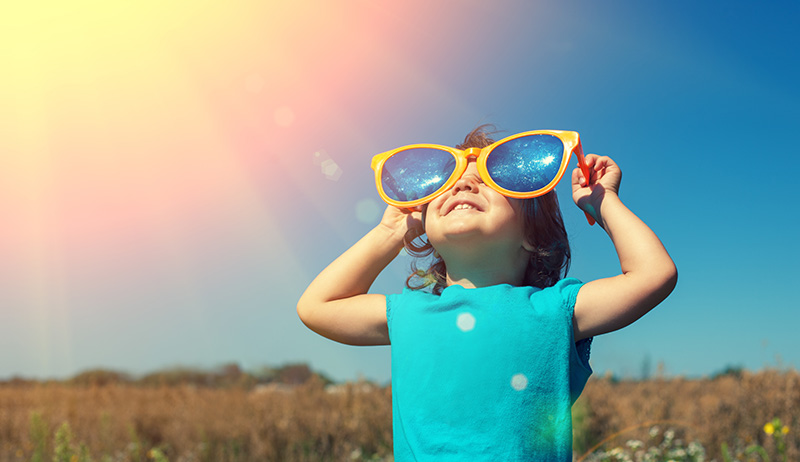Summer sun safety means you should focus on safe, outdoor fun while you protect your skin from damage, including dry and itchy skin, sunburns and skin cancer. Arizona typically receives 360 hours of sunshine in September, so you have plenty of opportunities to be outside. With a little planning, you can enjoy the summer sun and protect your skin at the same time.
Why is Sun Safety Important?
You might not think about it, but your skin is the body’s largest organ. It’s exposed to conditions that other organs are not because it’s on the outside instead of the inside of your body. This makes your skin vulnerable to weather and the environment, including sunlight.
While skin cancer can appear anywhere, not just the areas that were sunburned previously, some of the most common places include your face, scalp, neck, ears, lips, and the backs of your hands. Since skin cancer can be a result of sun exposure over a long period of time, not just a one-time sunburn, it is important to always practice sun safety.
According to the American Cancer Society (ACS), every year about 5.4 million Americans are diagnosed with skin cancer including basal cell skin cancer, squamous cell skin cancer, and melanoma. Melanoma—the deadliest form of skin cancer—is more often related to intense exposure and sunburn.
Is Sun Safety for Everyone?
Yes! If you have light skin, your hair is red or blonde or you sunburn easily, you have a higher risk of developing skin cancer. But people with darker skin can and do get skin cancer. ACS-funded skin cancer researchers have found that people with dark hair and dark eyes who have a gene mutation called MC1R also have a higher chance of developing melanoma if they don’t take precautions in the sun. Even if you have dark skin or tan easily, you must keep your skin safe.
Common Misbeliefs About Sun Safety
- Skin Cancer Risk Myth 1: You don’t have to worry about your skin unless you’re outside for a long time.
Reality: Even if you’re only in the sun for a few minutes at a time, you can get sunburned. Use sunscreen of at least SPF 30 all over every day, paying close attention to areas that often get exposed to the sun such as hands, arms, and face. Read more about choosing the right sunscreen for you in our blog on how to read a sunscreen label. - Skin Cancer Risk Myth 2: Waterproof sunscreen will last all day.
Reality: Many sunscreen bottles say they’re water resistant. That means it will wear off when you get wet. This includes any activities that involve water but sunscreen can also be worn off just by sweating. If you’re outside, you should reapply every 90 minutes to two hours and right after sweating or swimming. - Skin Cancer Risk Myth 3: Clothing will protect your skin from the sun.
Reality: While it’s a good idea to stay covered while in the sun, you should also make sure that the clothes have a tight weave so the rays won’t go through the fabric as easily. Also look for darker or bright colors and/or fabric that has been specially treated to block sunlight. - Skin Cancer Risk Myth 4: If you get a “base tan” you don’t have to worry as much about getting a sunburn.
Reality: Many people think that getting in some tanning bed sessions will make it so that they don’t get a sunburn once they’re outside. The ACS has confirmed that the UV rays used in tanning beds are just as damaging as UV rays you’re exposed to outside. Not only can you get sunburned from the tanning bed, it is also causing as much damage to your skin as being outside with no sun protection. - Skin Cancer Risk Myth 5: You only have to be concerned about sun exposure between 10:00 am and 4:00 pm.
Reality: The sun is strongest during those hours, but anytime you’re out in the sun you need to be careful – especially in the Arizona sun!
Steps to Stay Sun-Safe and Avoid Skin Cancer
The American Cancer Society has a fun way for you to remember how to stay safe in the sun. If you’re going outside, “Slip, Slop, Slap, and Wrap.” This means:
- Slip on a shirt.
- Slop on sunscreen.
- Slap on a hat.
- Wrap on sunglasses.
Watch out for changes in your skin like raised red patches, pink growths or flat areas that look like scars. If you find any of these, talk to your doctor. Have fun in the sun, but remember to stay sun-safe!
Originally posted in 2017, updated in 2024.



